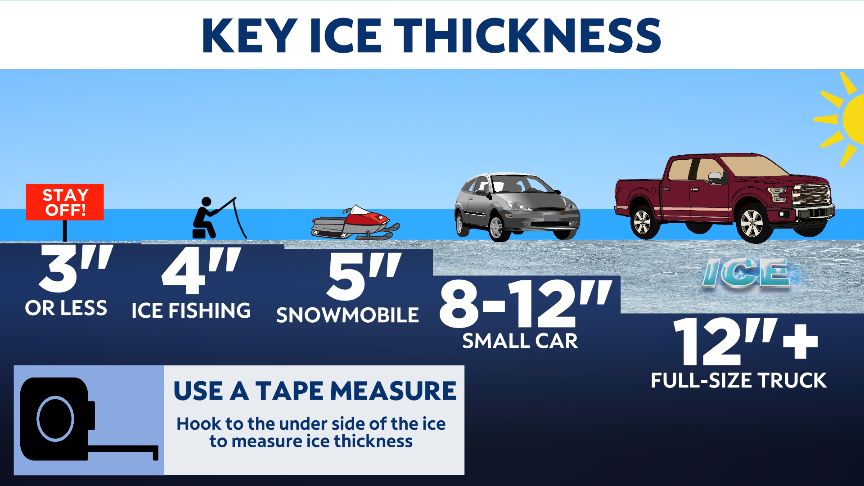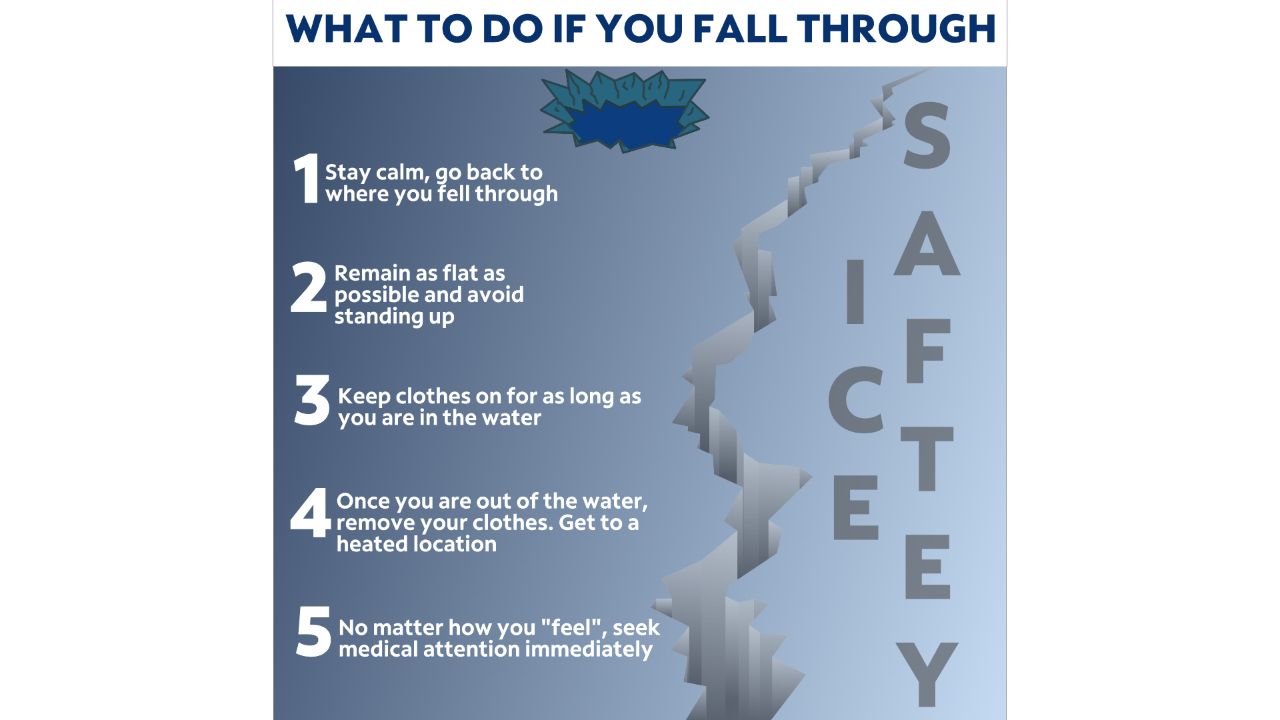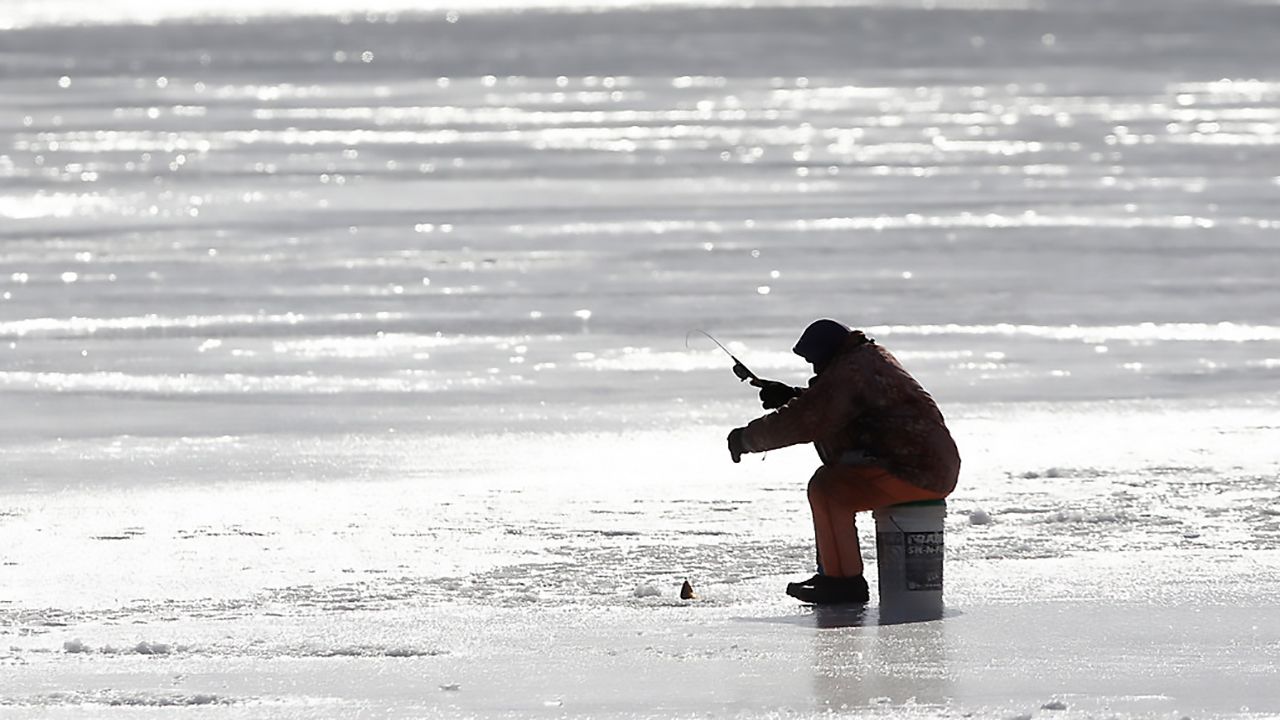Typically, in mid-January, you never have to worry about the amount of ice on a Wisconsin lake. Normally, by this time, it’s cold enough to create several inches to even feet of ice.
However, this year is oddly different. We’ve had an unusually mild start to the year, and the forecast calls for several days with above freezing temperatures. In fact, temperatures will probably trend above normal until mid-January. There’s a good chance that current ice levels will continue to shrink.
Fortunately, late December gave the local lakes a nice base. Many days were abnormally cold with sub-zero temperatures.
In theory, every 24-hour period of sub-freezing temperatures should create roughly an inch of ice. However, as the ice gets thicker, the process slows down. Cloud cover along with a wind will reduce the rate of ice creation. The perfect process to expedite ice growth is a clear sky with a light wind.
Sadly, we have seen little sunshine this month, and it looks like the sun will be hard to find in the coming days.

Right now, several large lakes are reporting 6 to 8 inches of ice. Lake Winnebago has roughly 8 inches. Pewaukee Lake and Lake Wisconsin have about 6 inches. Many northern lakes are seeing 10 to 14 inches of ice. Most of the thicker and safer ice sits in northwest Wisconsin. To see estimated ice thickness levels on your lake, use this link.
Remember, no ice is completely 100% safe. You should never go on the ice if the thickness is three inches or fewer. Wait until four inches or more to walk on the frozen surface. For vehicles to travel on the ice, the ice must be much thicker because of the weight.

Unfortunately, the state does not evaluate the amount of ice on each waterway throughout Wisconsin.
That’s why it’s truly important to check the thickness of the ice yourself before venturing out. Each lake is different because of currents and bubbling springs. You’ll need to consult with a local fishing expert or enthusiast on any potential weak spots or areas of thin ice.
Wisconsin’s Department of Natural Resources (DNR) website has some wonderful advice on how to stay safe while on the ice.
- Dress warmly in layers.
- Don’t go alone. Head out with friends or family. Take a cellphone if available and make sure someone knows where you are and when you should return.
- Know before you go. Don’t travel in areas you are not familiar with and don’t travel at night or during reduced visibility.
- Avoid inlets, outlets or narrow that may have current that can thin the ice.
- Look for clear ice, which is generally stronger than ice with snow on it or bubbles in it.
- Carry some basic safety gear: ice claws or picks, a cellphone in a waterproof bag or case, a life jacket and length of rope.
If you fall through the ice, stay calm and act quickly. The DNR suggests you follow these detailed steps to survive.
- Do not remove your winter clothing. Heavy clothes can trap air, which can help provide warmth and flotation. This is especially true in a snowmobile suit.
- Go back in the direction you came. That is probably where you will find the strongest ice—and what lies ahead is unknown.
- Place your hands and arms on the unbroken surface. This is where a pair of nails, sharpened screwdrivers or ice picks are handy in providing the extra traction you need to pull yourself up onto the ice.
- Kick your feet and dig in your ice picks to work your way back onto the solid ice. If your clothes have trapped a lot of water, you may have to lift yourself partially out of the water on your elbows to let the water drain before starting forward.
- Once back on the ice, don’t stand up. Lie flat until you are completely out of the water, then roll away from the hole to keep your weight spread out. This may help prevent you from breaking through again.
- Get to a warm, dry, sheltered area and warm yourself up immediately. In moderate-to-severe cases of cold-water hypothermia, you must seek medical attention. Cold blood trapped in your extremities can come rushing back to your heart after you warm up. The shock of the chilled blood may cause ventricular fibrillation, leading to a heart attack and death.

Our team of meteorologists dives deep into the science of weather and breaks down timely weather data and information. To view more weather and climate stories, check out our weather blogs section.



